Red Flags on the Heat Exchanger: Key Signs Repairs Are Needed ASAP
Recognizing the signs of a failing heat exchanger allows for timely intervention that preserves safety and efficiency.
A functioning heat exchanger is essential for the safe and efficient operation of a furnace, as it transfers heat to keep indoor spaces warm. However, over time, heat exchangers can develop problems that compromise both performance and safety. Knowing the warning signs of a failing heat exchanger allows for timely repairs that prevent hazards and keep the heating system running efficiently. Licensed HVAC and HVAC experts recommend routine inspections to catch these issues early, avoiding costly breakdowns and maintaining a safe home environment.
Cracks or Corrosion on the Heat Exchanger
Cracks or corrosion are among the most significant warning signs that a heat exchanger requires immediate attention. Over time, metal fatigue and rust can create cracks, which may lead to dangerous leaks. A cracked heat exchanger can let carbon monoxide and other combustion gasses into the home’s air, posing serious health risks.
HVAC specialists inspect heat exchangers for visible signs of cracking and corrosion, as well as any other structural damage. Licensed technicians have the tools to assess the extent of damage and recommend fixes or replacements as necessary. Promptly addressing cracks helps avoid exposure to harmful gases and guarantees the furnace operates safely and efficiently.
Unusual Odors When the Furnace Operates
A well-functioning heat exchanger should not emit any strange odors. If there is an unusual or pungent smell, particularly one that resembles formaldehyde, it may indicate a damaged heat exchanger. Such odors suggest a possible gas leak, which requires immediate attention to prevent health risks associated with toxic gas exposure.
Professional technicians can investigate the source of unusual odors, using specialized equipment to detect leaks and assess the heat exchanger’s condition. HVAC experts may also check related components for signs of HVAC issues that could contribute to odor problems. A licensed technician can offer solutions to eliminate the source of these odors, restoring safe and odor-free furnace operation.
Soot Buildup and Discoloration
Soot or discoloration around the furnace or heat exchanger is a clear indicator of incomplete combustion. When a heat exchanger is compromised, the furnace may fail to burn fuel efficiently, leading to a buildup of soot and black residue. Soot signals a problem with the heating system and can also increase the risk of carbon monoxide buildup.
Regular inspections by a licensed HVAC technician can help detect soot buildup early. HVAC upgrades may also be required if outdated wiring or faulty components contribute to inefficient combustion. By addressing these issues, a HVAC expert can help maintain proper combustion, reducing soot buildup and enhancing overall furnace performance.
Unusual Noises from the Furnace
Rattling, popping, or banging noises coming from the furnace may point to problems within the heat exchanger. These sounds can result from metal expansion and contraction, which is normal to an extent but may indicate damage if the noises are unusually loud or frequent. In some cases, unusual sounds may signal cracks or loose components within the heat exchanger.
HVAC experts can perform a comprehensive inspection of the furnace, checking for signs of internal damage or wear that might be causing the noise. HVAC repairs or upgrades may be necessary if the problem lies within the wiring or HVAC components. Professional technicians confirm that the heat exchanger and related parts operate quietly and efficiently, identifying and addressing any abnormalities.
Frequent Tripping of the Carbon Monoxide Detector
A carbon monoxide detector provides an essential safety measure in any home with a furnace. If the detector frequently triggers without a clear cause, it may indicate a problem with the heat exchanger. Carbon monoxide leaks from a cracked or damaged heat exchanger can lead to repeated alarms, emphasizing the need for immediate professional intervention.
HVAC technicians can examine the heat exchanger and determine if leaks are present. HVAC upgrades, such as more advanced detectors or additional safety features, may also be recommended to enhance detection capabilities and provide added peace of mind. Regular furnace inspections help keep carbon monoxide levels under control, supporting a safer indoor environment.
Reduced Heating Efficiency
A compromised heat exchanger can significantly reduce furnace efficiency. When heat transfer is inefficient, the furnace must work harder to maintain a comfortable temperature, leading to increased energy bills and added strain on the system. Signs of reduced efficiency include uneven heating, difficulty reaching the desired temperature, and longer heating cycles.
Professional HVAC repair and services can restore efficiency by addressing heat exchanger issues, cleaning components, and recommending any necessary upgrades. HVAC experts may also check for other underlying factors that could impact efficiency, such as faulty wiring or outdated controls. By optimizing the heat exchanger’s performance, homeowners benefit from a warmer home and lower energy expenses.
Recognizing the signs of a failing heat exchanger allows for timely intervention that preserves safety and efficiency. With support from HVAC professionals, heat exchanger issues can be addressed before they escalate, guaranteeing reliable and safe heating throughout the colder months.
CMB Air is a residential heating and cooling installation, service, and repair company with 15+ years of experience serving Tampa and surrounding areas. If you need a new air conditioner, repair, maintenance or some other service, we can help! Call (813) 447-1443 today!

